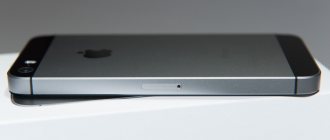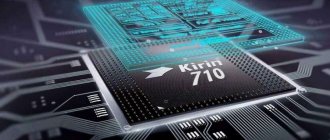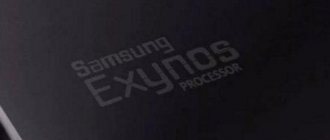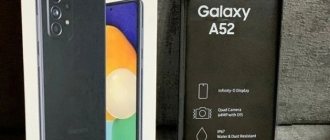Realme recently launched the affordable youth Narzo 10 in India. This is the first smartphone powered by the MediaTek Helio G80 chipset to launch in the country. In the last three-plus months, the Chinese giant has already launched Helio G70-powered phones i.e. Realme C3 and Helio G90T i.e. Realme 6 in India. This means that the Realme lineup now has a smartphone running on each of the three MediaTek gaming chipsets.
I recently got my hands on the Realme Narzo 10, which goes on sale today, so I ran all the standard benchmark tests as usual. I have already given the same approach to Realme C3 and Realme 6, so I obviously decided to compare the benchmark results of the three chipsets that power these smartphones. So, here are the benchmark results of Helio G70 vs Helio G80 vs Helio G90T:
Mediatek Helio G90 (Helio G90T) - chipset capabilities
The processor itself was positioned as a gaming processor even before its official release. That is, they initially expected it to have enough power, a modern technical process, modern cores and good optimization. In fact, everything turned out quite well and the Helio G90, looking ahead, turned out to be a kind of analogue of the Snapdragon 730. However, the chip failed to reach the performance of the Snapdragon 855 and especially the Snapdragon 855+. Let down by the lower frequency of the cores used in their pure form (Qualcomm is rebuilding Cortex into Kryo), a less productive graphics core, as well as a less advanced technological process - 12nm versus 7nm. But more on that a little later, but now let’s look at what Mediatek itself is proud of in the Helio G90.
Helio G70 - Helio G80 - Helio G90T: tests
Note. We ran benchmark tests on Realme C3 (Helio G70), Realme Narzo 10 (Helio G80) and Realme 6 (Helio G90T) for this comparison.
First, we ran an AnTuTu benchmark and it became clear that the Helio G70 and Helio G80 chipsets are not much different from each other. The Helio G70 scored 191,731 points in the AnTuTu benchmark, while the Helio G80 scored around 200,600. The difference between the AnTuTu benchmarks is only 9,000 points, which is not that significant. Both should offer similar metrics on a daily basis.
From left to right: Helio G70, Helio G80, Helio G90T
On the other hand, the Helio G90T with new ARM Cortex-A76 cores and a powerful Mali-G76 GPU offers a noticeable performance boost at a negligible price difference. The Helio G90T scored around 285,000 points in the AnTuTu test.
The Geekbench results paint an even clearer picture. Helio G80 abroad Narzo 10 received about 380 points for the single-core test and about 1280 points for the multi-core test. The Helio G70's single and multi-core scores are around 350 and 1260 respectively. So you can see that there is not much difference in the processing area (CPU) here. This means that Narzo 10 will provide better gaming performance thanks to the slightly overclocked GPU.
From left to right: Helio G70, Helio G80, Helio G90T
Once again, the Helio G90T is ahead of the Helio G70 and Helio G80 thanks to the new Cortex-A76 cores and higher effective core clocks. If you could, spending a couple of thousand dollars to buy a Helio G90-powered smartphone will prove more fruitful in the long run.
A slight overclocking of the Mali-G52 GPU on board the Helio G80 is demonstrated by the Sling Shot Extreme test in 3DMark, screenshots below. The Helio G80 scores higher than the Helio G70 in OpenGL and Vulkan tests. The Helio G90T, on the other hand, boasts a much more powerful GPU, comparable to the Adreno 616 GPU on board the Snapdragon 710.
From left to right: Helio G70, Helio G80, Helio G90T
I may sound like a broken record, but again the performance of the MediaTek Helio G80 and Helio G70 is comparable. The former scored around 8,500 in the PCMark test, while the latter came close to 8,900, which is a minor difference and won't impact day-to-day use much. The Helio G90T is clearly the more powerful chipset among the three, but it requires more noise from you.
From left to right: Helio G70, Helio G80, Helio G90T
We were unable to run AITUTU or any other AI test on any of the above-mentioned MediaTek G series chipset-powered phones due to the extended lockdown period. We don't have all the phones on hand at the moment, but we were still able to quickly compare test results between the Helio G70, Helio G80 and Helio G90T.
Helio G90 - main characteristics
- Artificial intelligence: yes, power up to 1TMACs;
- Processor (CPU): 2 Cortex-A76 cores + 6 Cortex-A55 cores, clock frequency up to 2 GHz (Helio G90T 2.05 GHz), 64-bit, 12 nanometer process technology;
- Video processor (GPU): Arm Mali-G76 3EEMC4, frequency up to 720 MHz (800 MHz for Helio G90T), support for displays up to 2520x1080 pixels;
- Memory: support for LPDDR3 and LPDDR4 RAM memory types with a frequency of up to 2133 MHz and a capacity of up to 10 GB; support for internal drives of the eMMc 5.1 and GAS 2.1 memory standard;
- Cameras: Support 24MP + 16MP stereo cameras (@30fps), single cameras up to 48MP (@30fps), single cameras up to 64MP (@22.5fps);
- Video: 4K 30fps/FHD 120fps/HD 240fps video recording with H.264/H.265/HEVC encoding; video playback 4K 30fps/FHD 120fps/HD 240fps in H.264/H.265/HEVC/VP-9 encoding;
- Camera software capabilities: 3 ISP cores; AI Face detection, HW depth sensor, AINR, single/dual camera bokeh; hardware stabilization mechanism (EIS), rolling Shutter Compensation (RSC) engine; MEMA 3DNR, multi-frame noise reduction;
- Communication: Carrier Aggregation (CA), CDMA2000 1x / EVDO Rev. A (SRLTE), FDD/TDD LTE, HSPA+, Wi-Fi 5 (a/b/g/n/ac) 4X4 MIMO, 3XCA, 256QAM, TAS 2.0, HPUE, IMS (VoLTE\ViLTE\WoWi-Fi) , eMBMS, dual 4G VoLTE (DSDS), Cat-12 DL/Cat-13 UL modem, Bluetooth 5.0, FM radio;
- Navigation: Beidou, Galileo, GLONASS, GPS.
Working with cameras
In terms of NPU (neural network task processing unit) performance, we do not have details about what the creators have prepared in the Helio G90T. There appears to be no change from the P90.
As for the camera, the younger MediaTek Z90 is no different from its predecessor P90. It can work with 48 MP sensors or a pair of 24 + 16 MP modules.
The MediaTek Helio G90T looks more solid here and boasts compatibility with the latest 64-megapixel sensors announced by suppliers such as Samsung.
The new chip is still manufactured on the 12nm FFC process, and thus MediaTek will likely be able to produce the chip extremely inexpensively compared to Qualcomm, which makes SoCs on thinner process nodes.
Great mobile camera capabilities with Helio G90
The G90 series is not only designed for gamers, but is also the first chip that will allow you to work with 4-module cameras of 64 MP. There could be quite a few quad-camera smartphones coming soon, as the Helio G90 allows brands to integrate different lens and sensor options, be it ultra-wide or telephoto cameras. Helio G90 also allows you to equip gadgets with a ToF depth sensor, which can accurately separate the foreground from the background to create stunning portrait shots.
The use of three ISP cores allows for proper distribution of performance across all photo modes, and the built-in hardware depth engine provides real-time bokeh viewing. For lovers of slow-mo, video recording speeds of up to 240 FPS with efficient HEVC encoding are available. Thanks to the combination of 2X Helio G90 APU hardware and powerful CPU and GPU cores, users will be able to enjoy very powerful AI camera applications.
Helio G70 vs Helio G80 vs Helio G90T: Which chipset is better?
The answer to this question is right in front of you. As for the device you should buy, it is good if your budget is below Rs. 10,000, then the MediaTek Helio G70 powered Narzo 10A will not disappoint you. I would suggest you to choose Narzo 10A over Realme C3 due to the presence of a physical fingerprint sensor on the former. Realme C3 does not include a fingerprint sensor.
If you can increase your budget to Rs. 15,000, then the Helio G90T chipset onboard the Realme 6 is no match for the Helio G80 chipset on the Narzo 10. It will provide you with a better everyday experience as well as gaming performance. You also have a 90Hz punch-hole display, a 64MP camera and a decent battery, so what do you think? Let us know your thoughts in the comments below.
Post Views: 6
High-speed Internet thanks to Helio G90
The MediaTek G90 series includes an LTE at-12 4G LTE WorldMode modem with 3-carrier aggregation, 4x4 MIMO and 256QAM. This provides more reliable communications even in densely populated areas such as stadiums, busy shopping areas, offices or airports. Helio G90 supports advanced cellular features such as IMS (VoLTE/ViLTE/VoWi-Fi), which are currently supported by 175 cellular operators worldwide. There is also support for eMBMS, HPUE and Band 71 in North America.
MediaTek Helio G90T in AnTuTu. Will Redmi Note 8 Pro be powerful?
Synthetic tests do not demonstrate the actual performance of smartphones, but show their possible peak performance, and therefore are important for comparison. It has already become known how much the new solution scores in the popular benchmarks AnTuTu 8 and Geekbench 4.2.
- Helio G90T Geekbench Single-Core - 2450 / 7400 points.
- Helio G90T AnTuTu 8 - 280,000 points.
As you can see, the Helio G90T is really on par with the Snapdragon 730 in terms of power. In turn, the Kirin 810 turns out to be a little more powerful in terms of CPU, but a little weaker in terms of graphics. Note that in the single-threaded Geekbench test, the Zh90T scores the same as the Snapdragon 845.
One of the main disadvantages of the chip is its relatively thick process technology.
To neutralize it, Xiaomi decided to install an improved heat dissipation system. The first tests show that the Redmi Note 8 Pro does not heat up too much, there is throttling, but it is not critical. You can play PUBG on high graphics settings.
MediaTek HyperEngine Game Technology - a processor designed for gaming
The Helio G90 cannot boast of super high scores in Antutu or GeekBench, but the manufacturer still positions its solution as one of the best for mobile gaming. This is not surprising, because the chipset is comparable in power to the Snapdragon 730, which in turn is capable of running any heavy games at maximum settings. As for the Helio G90, it offers the following technologies for comfortable gaming.
Intelligent network technology management
- Intelligent prediction of simultaneous launch of Wi-Fi and LTE in just 13 ms;
- The fastest possible response between a smartphone and a cell tower;
- Connect to two Wi-Fi bands or routers simultaneously to ensure minimal communication delay with the game server;
- The ability to reset incoming calls during the game, without losing the connection even for a moment.
Optimized for smooth movements and quick response
- The latency pipeline for rendering images on the display has been reduced by 60%, ensuring image output without delays during the game;
- Helio G90 allows you to move smoothly through the game world without freezes or dropped frames.
Excellent image quality
- Faster frame rates and smoother gameplay with action pipeline and lower image latency;
- Superior image quality with better contrast, texture clarity and fine detail;
- HDR visual effects to enjoy high dynamic range scenes.
Resource management engine for better and longer gaming experience
- Intelligent/dynamic management of CPU, GPU and memory;
- Smooth performance in heavy game engines, demanding scenes or intense gameplay;
- Increased energy efficiency for even longer gameplay.
New graphics acceleration technology
Like many manufacturers, MediaTek is targeting the gaming processor segment. There are more and more interesting games on smartphones (just look at the release of Call Of Duty), so more and more people will soon be actively playing on their mobile devices.
In this regard, the company has prepared its answer to the GPU Turbo technology developed by Huawei. MediaTek has also implemented a package of optimizations that promise to improve the phone's performance in games.
The most important aspect for MediaTek is to provide stable 60 FPS in games without lag.
Helio G90T vs Kirin 810 - processor heating
From year to year we are told that the thinning of the technological process of chips has a positive effect, first of all, on power consumption, and, accordingly, on heating. The difference between Helio G90T and Kirin 810 is colossal - 12nm versus 7nm, respectively. In theory, this is true, but it often happens that reality is far from the ideal, sterile conditions of laboratory calculations. What did you find out?
- Kirin 810 - the maximum heating of the Honor 9x case was 42 degrees Celsius;
- Helio G90T - the maximum heating of the Redmi Note 8 Pro body was 46.8 degrees Celsius.
It is worth noting that both smartphones use a powerful liquid cooling system. Perhaps Huawei did it a little better, but for some reason it’s still hard to believe, it’s just that MTK once again turned out to be hotter and it’s worth putting up with, or something. And its lower productivity should be taken into account, so the technical process really makes a difference. But there is also a plus in the “hotness” of the Hwlio G90T - your hands will never freeze in winter. You just have to turn on the game, wait until the device based on the Helio G90T warms up and look at the freezing people around you with a grin :))
Helio G90T comparison with Kirin 810 - throttling
The temperatures of the Kirin 810 are lower, and the processor throttling is also less. The processor loses only 2-5% of the initial performance and this behavior is almost equal to a statistical error. But the Helio G90T is not doing so well, and when it heats up too much, the performance drops significantly. On average, the power of a stone in stressful situations drops by 15-18% and such a drop in performance during gaming certainly will not go unnoticed.
Will Google Camera work on Redmi Note 8 Pro?
For now, it’s difficult to give a definite answer. However, considering that even the Helio P22 can process images via Google Camera in HDR+, the Redmi Note 8 Pro Google Camera should run without problems. How high-quality photographs will be obtained is still a question.
To summarize, it must be said that Redmi Note 8 will be clearly more powerful than Redmi Note 7. It will receive a processor with powerful new generation cores, which will have a positive effect on smoothness, heating and battery life. Gaming performance will improve.
Frankly speaking, it’s time to forget that MediaTek “rivets” chips with weak graphics. This “single-chip” will be quite good and powerful, normally adapted for gaming.
The only question is how it will perform not even in comparison with the Snapdragon 730, but with the latest Kirin 810, which is installed in the Honor 9X, which acts as the main competitor to the not yet announced Redmi Note 8. This comparison has yet to be made.
Helio G90T vs Kirin 810 - who is better? Bottom line
In this comparison, Qualcomm Snapdragon 730G won... But no, stop - Kirin 810! Despite the fact that the Helio G90T turned out to be a worthy opponent, it still loses to the Kirin 810 in terms of process technology, performance, heating and throttling, as well as power consumption.
But it’s worth saying that over time, the gap between the Helio G90T and the Kirin 810 may narrow slightly due to more thoughtful software optimization and tuning of the chipset itself (scheduler and core power consumption in the first place). And the plus of the Helio G90T is that this mobile platform can be installed in any smartphone, but the Kirin 810 is for Huawei and Honor smartphones, which are currently having problems with Google services. That is, it turns out that for now you won’t even be able to buy a normal, or rather a full-fledged device on the Kirin 810 outside of China, because it will be an almost useless dialer.











